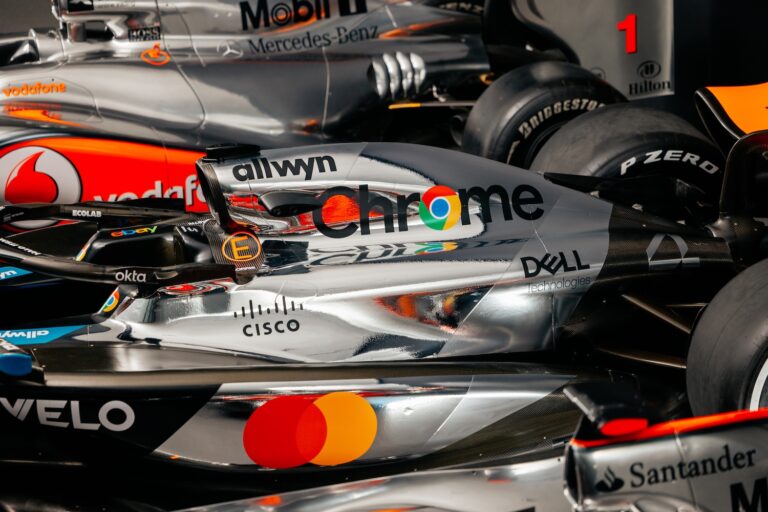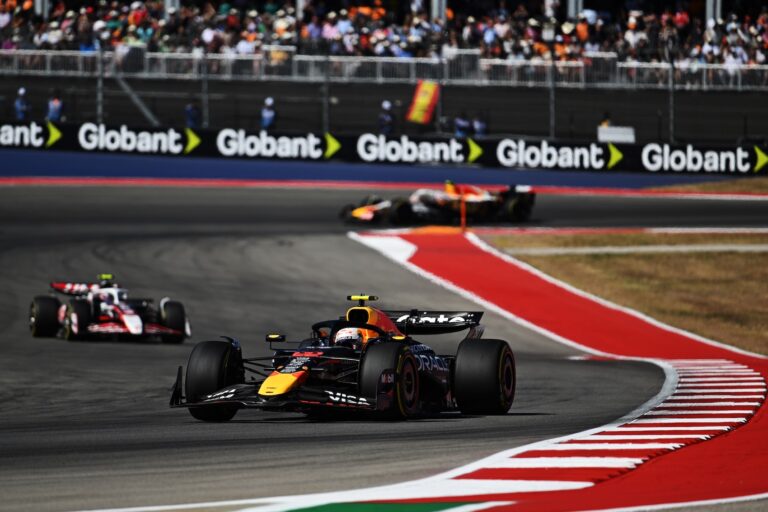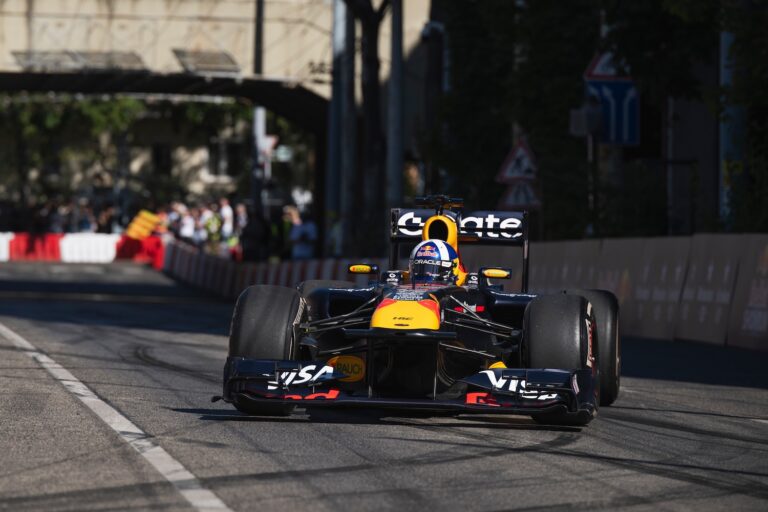In a winter filled with news on wider tyres, increased aerodynamics, shock world champion retirement announcements and a raft of technical personnel changes, the Formula 1 world has not been short of news. One topic which perhaps hasn’t received the coverage many would expect has been that of fuel and lubricant supply. Let’s take a bolder and closer glance at this.
Click here to subscribe to our print edition!
The 2017 Formula 1 season will see almost half the teams on the grid switching fuel and lubricant supplier. To refresh your memory:
- Mercedes AMG Petronas, Williams Martini Racing and Sahara Force India will continue to use Petronas developed fuel and lubricant solutions.
- Scuderia Ferrari, the Haas F1 Team and the Sauber F1 team will continue with Shell as their Fuel and Lubricant partner/supplier, although Sauber will use 2016 compounds as required by the team’s 2016 power unit.
- McLaren Honda and the Renault F1 Team will switch from ExxonMobil/Mobil One and Total respectively to BP & Castrol who are returning to the sport in supplier and partner relationships.
- Red Bull Racing and Scuderia Toro Rosso will switch to ExxonMobil/Mobil One bringing to conclusion supply relationships with Total and Shell respectively.
Typically, the conditions under which a team switches fuel and lubricant supplier is that of power unit supply change. In 2017 the only team switching power unit supply will be Toro Rosso, from Ferrari to a white label Renault unit. It is not clear what triggered the raft of changes but Total’s decision to leave the sport will have played a significant role.
It’s complicated
The relationship between a Formula 1 power unit and the fuel and lubricant used to power it is hugely complex. The severity of the changes outlined above and the ramifications they may have on the season ahead can not be underestimated. At any given time, Shell and Scuderia Ferrari engineers are working on as many as 65 different fuel compounds, with each one based on the development criteria of the power unit and vehicle design. Every element is optimised to maximise performance against key indicators mapped out by the team. That could be efficiency, acceleration, or outright performance. The fuel and lubricant supplier identifies performance gains which will influence the development route taken in power unit advancements.
As with any technical implementation, consistency and simplicity are key, as such, it can be expected Petronas and Shell will have an early advantage over newcomers BP and transitioning partner ExxonMobil in 2017.
Owing to the increased weight of 2017 Formula 1 machinery due in part to increased tyre weights. The FIA have increased fuel tank capacity from 100kg to 105kg. Given the expected increased drag due to increased aerodynamics, it is anticipated fuel efficiency compared to 2016 will be poorer. Despite this increased allowance in the regulations, teams will be working hard with fuel and lubricant suppliers to minimise the use. It is thought that an additional kg of fuel can cost as much as one-tenth of a second per lap.
BP and Castrol are likely to face a steep learning curve as they return to the sport. Officials have indicated preparations for the return commenced around halfway through last year, giving technical staff almost nine months to prepare ahead of the return, however, to further complicate the picture BP and Castrol will supply two different power unit manufacturers – Renault and Honda. It has been confirmed that each power unit will require different technical solutions and will employ separate development routes. In the short term, this will lead to split resources and may negatively impact the performance of both teams supplied. The rate of development through the season may also be compromised.
A different approach
The Exxon Mobil situation is quite unique. They are the only fuel and lubricant supplier to have experience with three of the four power unit suppliers in the modern era of Formula 1. Arguably, they hold the most experience of any fuel and lubricant supplier in the sport today. Nevertheless, there will be a learning curve with Tag Heuer-badged Renault power unit used by Red Bull Racing and white label unit supplied to Toro Rosso which may impact performances early in the season.
With confirmation that the Renault power unit used by the Renault F1 team will run BP/Castrol compounds and the Renault power unit used by Red Bull Racing and Toro Rosso (Red Bull Technologies) will use ExxonMobil fuel and lubricant compounds, Renault has confirmed the 2017 power unit has been homologated for two separate fuel and lubricant suppliers. This may seem like an incidental point, but it suggests a far greater plan is in place. As explained earlier, fuel and lubricant development can dictate or at the very least influence power unit development. With the eradication of the tokens system restricting power unit development in 2017, teams are free to develop power unit technology as they see fit with the only restriction being budgetary.
Should ExxonMobil and Red Bull Technologies identify a performance opportunity in the relationship between their fuel and lubricant compounds and the Renault power unit, they may trigger a separate development route for the power unit outside of that Renault have outlined. BP and ExxonMobil are unlikely to share technology solutions, leaving Red Bull Technologies free to evolve a power unit to best suit their fuel and lubricant solution. With power unit regulations fixed until 2020, should Red Bull Technologies continue down a route of separate development to Renault and BP, at what point would a Renault power unit no longer be considered a Renault power unit? Could the introduction of split fuel and lubricant supply solutions be a precursor to a separate power unit development programme? If so, at what point can we expect Tag Heuer branding to be replaced with that of an automotive manufacturer? If this is the case, to what extent has this strategy already been agreed between the respective parties?
Tip of the B2B iceberg
Contrary to the Formula 1 car fans religiously observe week in week out, providing we remember the difference between petrol and diesel, our everyday car will run perfectly well on fuel from any forecourt and decision making the process more often than not is based on when the fuel gauge warning light comes on over any other external factor. Customer loyalty is the holy grail of every marketer working in the customer-facing fuel sector and it is becoming increasingly difficult to achieve. Can Formula 1 relationships play a role in resetting these trends and instil the heavily coveted forecourt loyalty?
Shell seeks to appeal to the car conscious driver with V-Power, promoting increased fuel efficiency, increased performance and cleaning qualities in their premium offering, but sustaining consumer interest in these benefits can prove challenging. The token collecting generation to “win a model car” is a thing of the past. Fuel and lubricant suppliers are evolving their business strategy to reflect the modern consumer and working much closer with automotive manufacturers.
Talking about BP returning to Formula 1 with Renault, it is understood, although as yet unannounced, that the Formula 1 partnership is the face of an overarching deal in which BP will become the preferred fuel partner of the Renault-Nissan group. Beyond naming rights, it is unclear what this actually means, but it is possible the partnership will entail BP becoming the fuel all new Renaults are filled with upon sale and Castrol becoming the suggested oil and lubricants partner for Renault cars. The partnership between McLaren Honda and BP is believed to be due to existing agreements between Honda and BP similar to that outlined with Renault. Whilst both the Renault and Honda relationship with BP are commendable and speak to industries collaborating, the consumer impact is limited.
With Red Bull and ExxonMobil, the business-facing relationship may not be immediately automotive, but as government taxation on fuel and oil continues to marginalise profits from the sale of fuel on the forecourt, the ancillary sale of goods has grown in importance. Red Bull may have brokered a deal in which ExxonMobil receive optimised pricing in return for preferential placement of product of Red Bull in filling stations. Red Bull is available in every ExxonMobil forecourt at an affordable price will be great, but will be unlikely to have consumers going out of their way to find ExxonMobil filling stations to get the drink.
With Petronas not having a global consumer-facing presence the scalability of the Mercedes partnership is limited. However, Petronas have become partners to all Mercedes motorsport interests, should Mercedes elect to take up their place on the Formula E grid in Season 5, Petronas may seek to use the platform to promote their renewable energy strategy.
Instead of an epilogue
At Scuderia Ferrari, Shell has an opportunity to revolutionise the fuel market. Fiat Chrysler Automobiles (FCA) remain 90% shareholders of Ferrari Spa. They are the 7th largest automotive manufacturer in the world. With the partnership between Shell and Ferrari renewed in 2015 through to 2020, to best capitalise on the agreement Shell should seek to broaden their partnership to incorporate FCA. The driving force behind a consumer’s decision-making process today is cost and habit. To tap into these factors Shell could agree to offer all new buyers of an FCA model discounted fuel, not for their first fill up, but for the life of warranty of the car. If Shell offered a £/€/$0.05 per litre discount on standard Shell fuel and £/€/$0.08 per litre on Shell V Power, they would have new car owners, and new drivers actively seeking out Shell filling stations. If Shell could achieve this partnership with FCA, they could look to mimic the agreement with other motorsport partners in BMW, Hyundai and Ducati. Consumers will get into the habit of seeking out their reduced price fuel, they might genuinely feel part of a club. In offering the reduction for a sustained period, the action of seeking a Shell filling station becomes a habit. It becomes the norm. Knowing eight million new car buyers will actively seek Shell fuel will allow the business to plan and allocate specific resources to future energy sources.
The business of Formula 1 is obviously very dynamic, hence its ability to influence every aspect of the automotive industry should not be underestimated. As Formula 1 heads towards a new era of technological advancement, it is time for the relationship between the oil industry and automotive manufacturers to tackle challenges head-on as a united front maximising their full power and influence over consumers and the decision making process.







